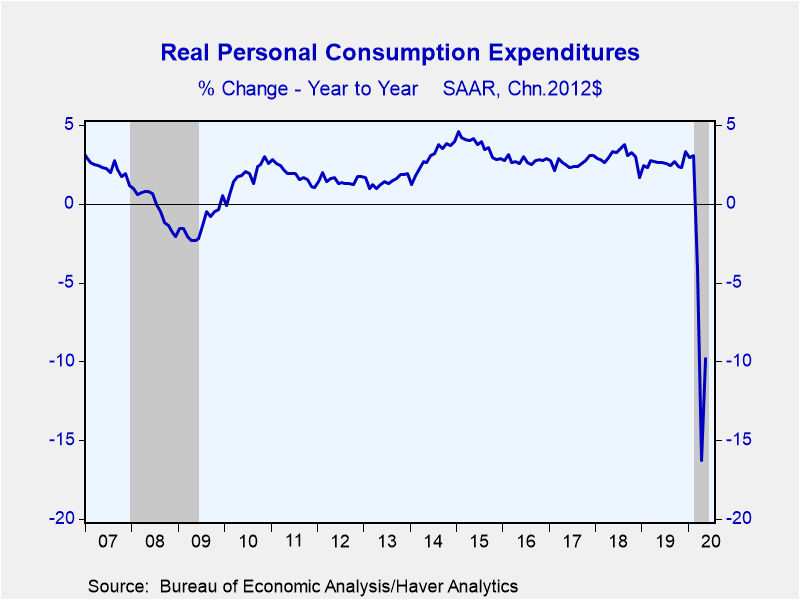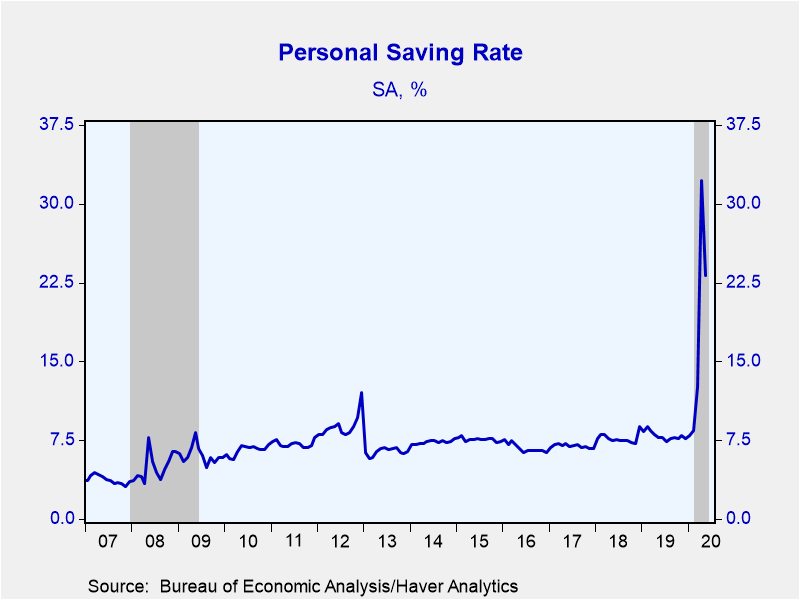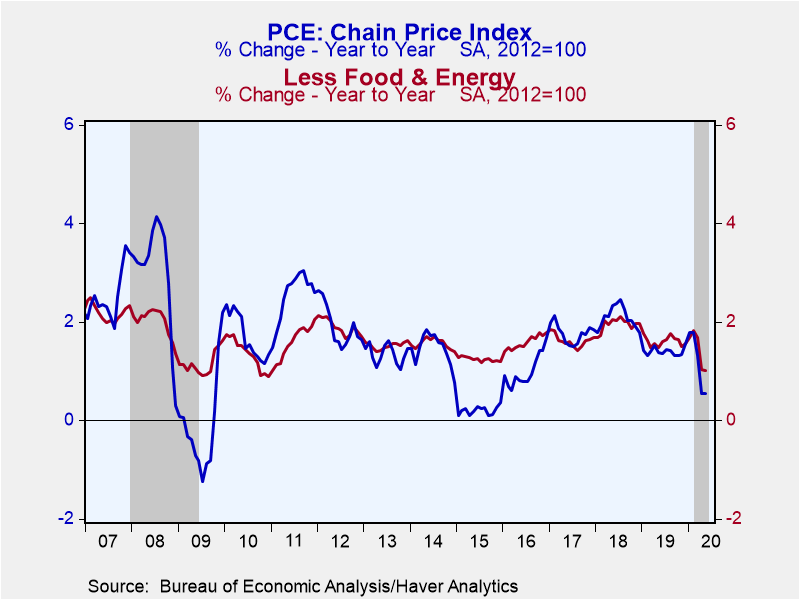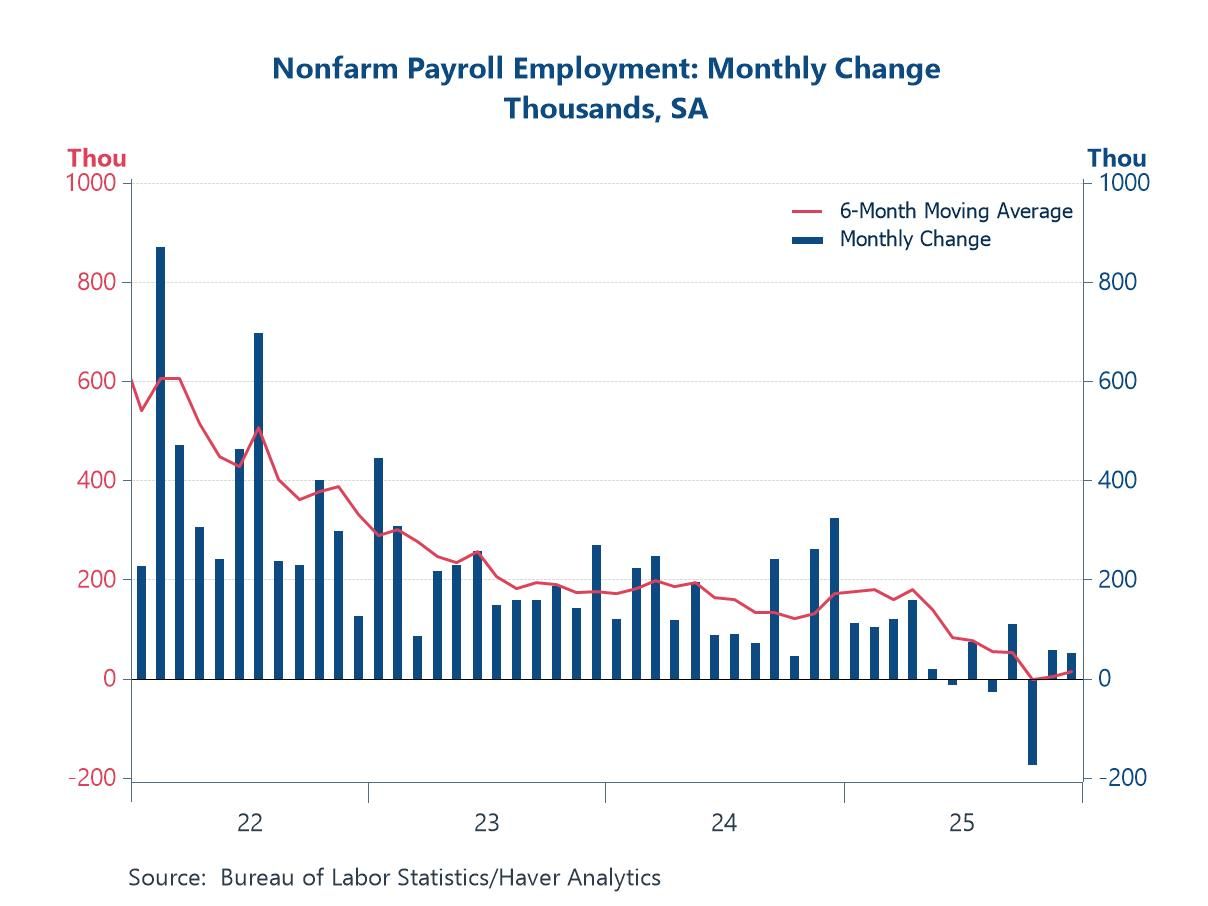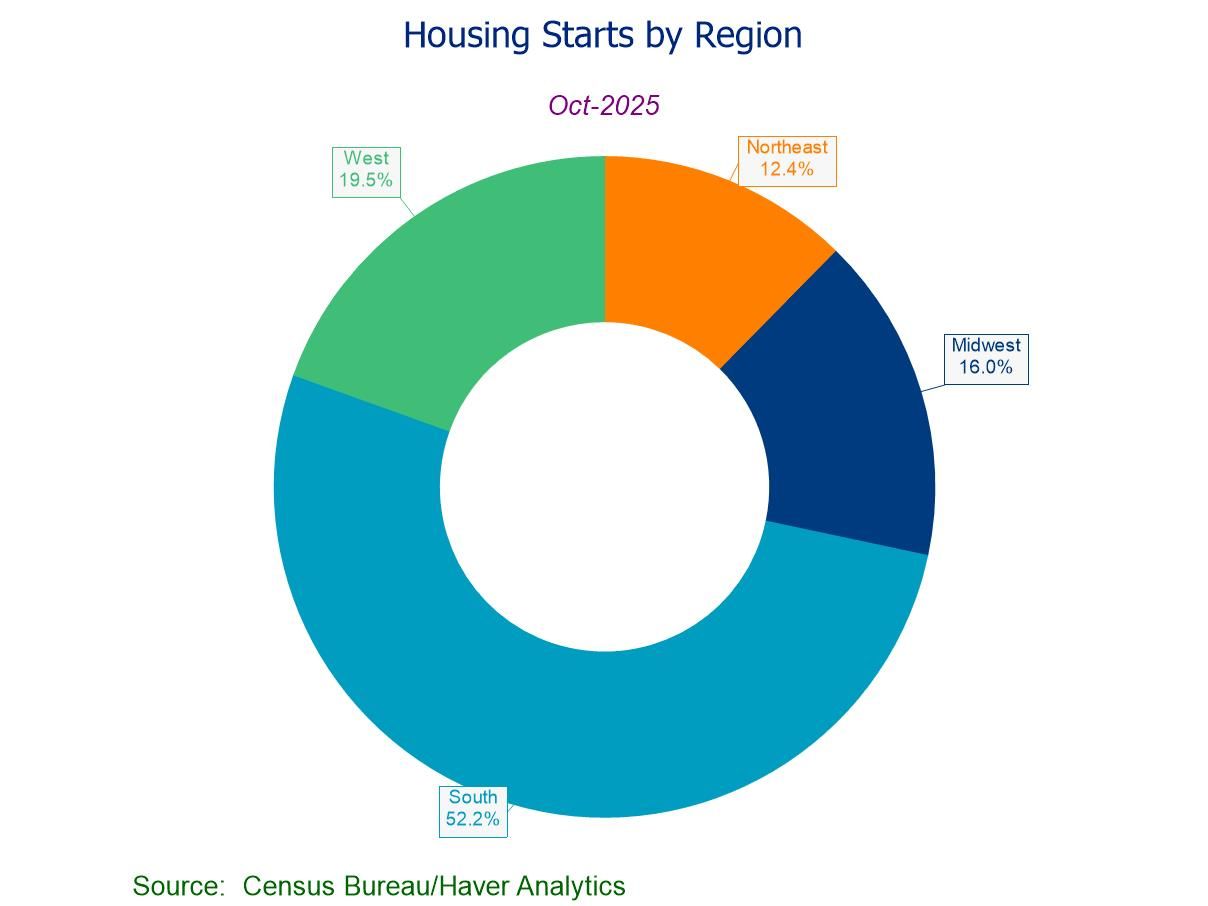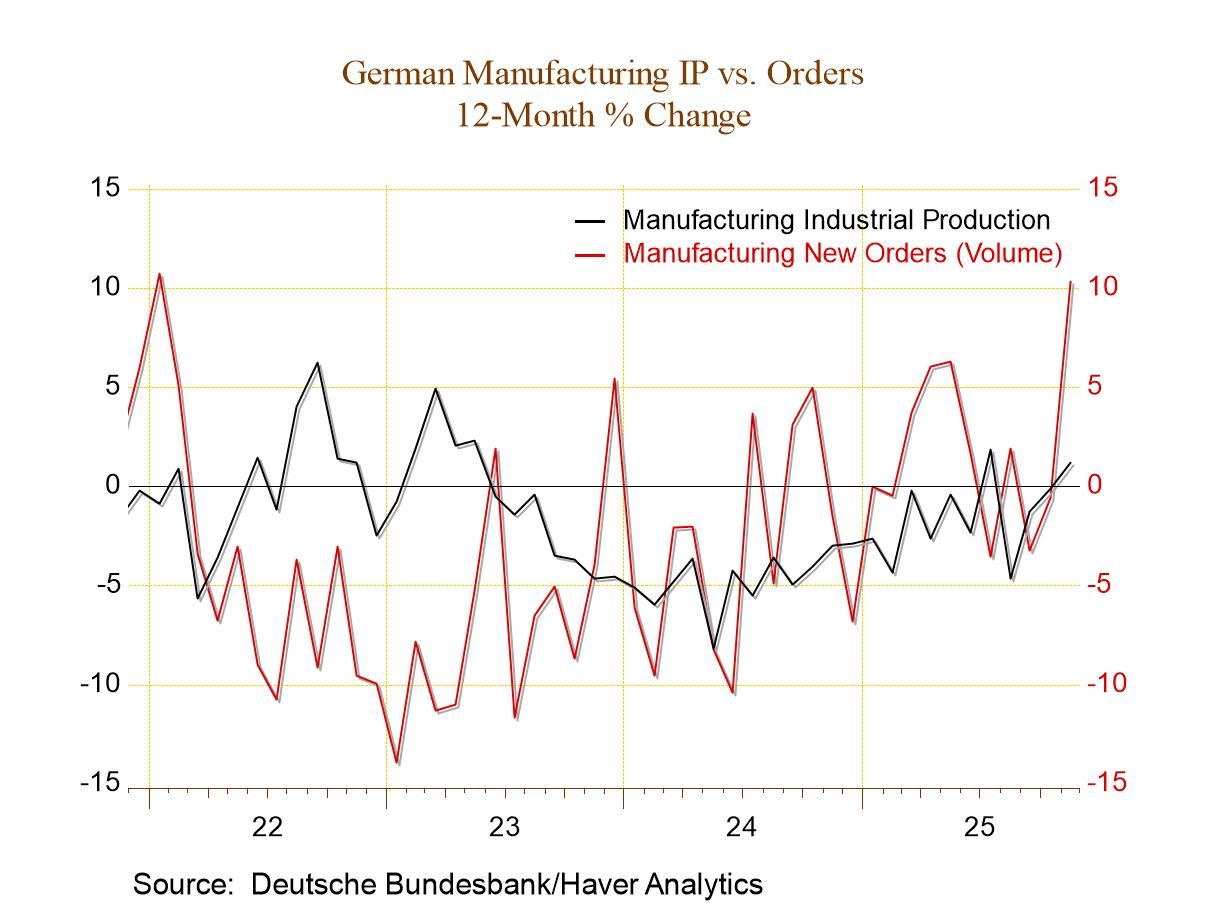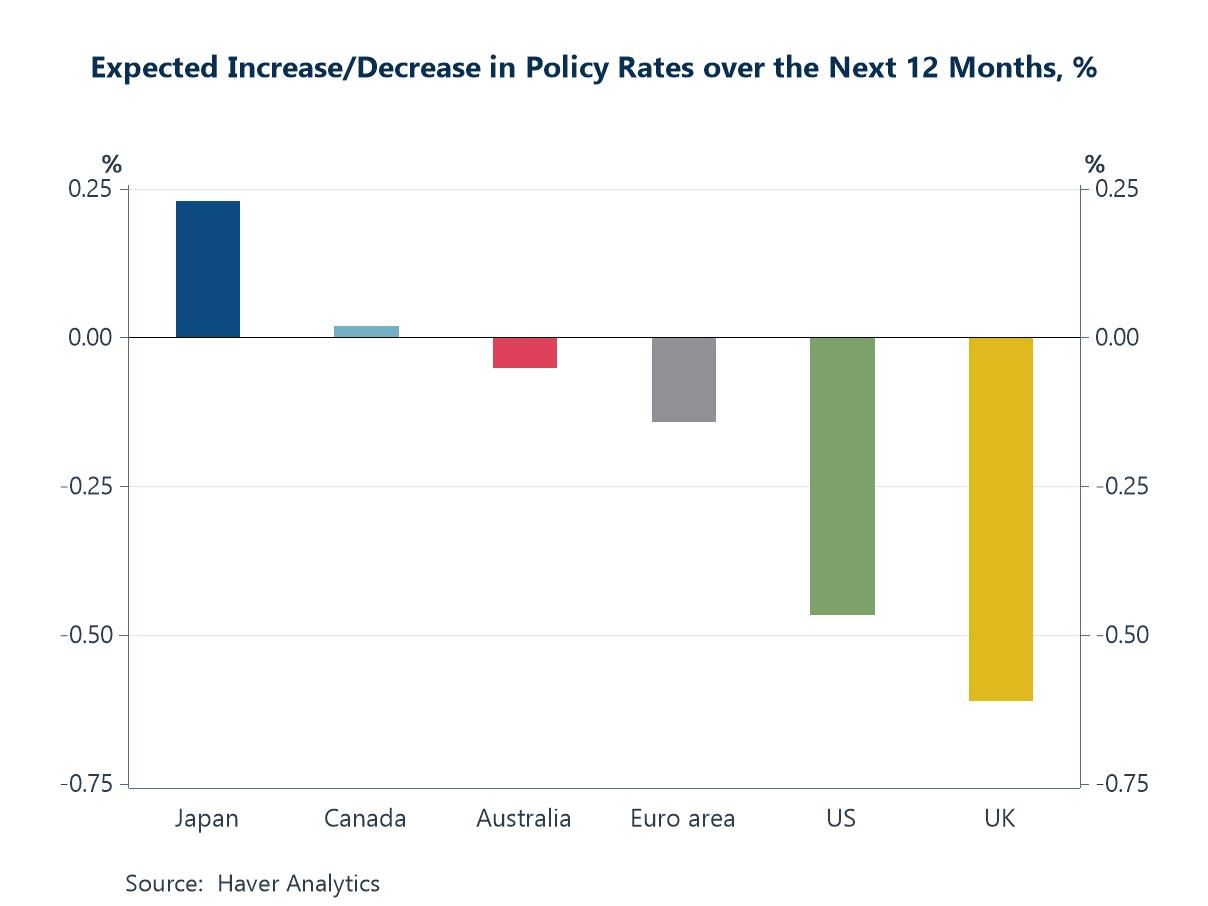 Global| Jun 26 2020
Global| Jun 26 2020U.S. Personal Spending Increase in May Sets Monthly Record; Income Declines
by:Tom Moeller
|in:Economy in Brief
Summary
• Spending rebound follows two sharp monthly declines. • Personal income drop reflects lessened government support. • Price inflation is minimal. Personal consumption expenditures increased 8.2% during May (-9.3% y/y) following [...]
• Spending rebound follows two sharp monthly declines.
• Personal income drop reflects lessened government support.
• Price inflation is minimal.
Personal consumption expenditures increased 8.2% during May (-9.3% y/y) following declines of 12.6% during April and 6.6% in March, revised from -13.6% and -6.9%. These shortfalls reflected business closures and government stay-at-home guidelines. An 8.7% increase had been expected in the Action Economics Forecast Survey. In constant dollars, total spending rebounded 8.1% last month (-9.8% y/y). Real durable goods spending jumped 28.4% (2.4% y/y) during May after falling 11.3% in April. Spending on motor vehicles rebounded by 37.5% (-0.1% y/y) after falling for five straight months. Home furniture & appliance buying surged 23.3% (1.9% y/y) and made up declines in the prior two months while recreational goods & vehicles outlays surged 24.3% (20.3% y/y) to a record high. Real nondurable goods buying increased 7.9% (-0.6% y/y) after declining 13.3% in April. The increase reflected a 43.5% surge (-22.6% y/y) in sales of clothing & shoes after two months of sharp decline. Gasoline & oil sales recovered 23.9% (-16.7% y/y) and made up for the prior month's weakness when driving was diminished. Food & beverage purchases rose 2.4% (7.9% y/y) after declining 14.2% in April. Real spending on services improved 5.2% (-14.3% y/y) after plunging a record 12.0% in April. The increase was led by a 23.7% rise (-22.7% y/y) in outlays on health care and a 20.3% increase (-36.6% y/y) in spending on transportation. Sales of recreation services improved 4.5% (-56.0% y/y) following two monthly declines totaling 58.7%. Spending at restaurants & hotels recovered 24.3% (-40.9% y/y) which came after a sharp reduction in the prior two months. These increases were tempered by a 0.2% slip (+1.7% y/y) in outlays on housing & utilities.
Personal income declined 4.2% (+7.0% y/y) after surging a little-revised 10.8% in April. A 5.7% decline had been expected. The decline reflected a 17.3% falloff (+68.6% y/y) in government transfer payments as economic impact payments slid 76.6%. Wages & salaries improved 2.7% (-5.7% y/y) after declining 7.6% and 3.7% in April & March, respectively, with the record reductions in employment. Proprietors income improved 2.8% (-10.9% y/y) after falling sharply for two straight months. Rental incomes improved 0.2% (2.8% y/y). Receipts on assets eased 1.4% (-3.7% y/y), due to roughly 1.5% declines in both personal interest & dividend income.
Disposable personal income declined 4.9% (+8.8% y/y) last month after rising 13.1% in April. Adjusted for price inflation, take-home pay decreased 5.0% (+8.2% y/y) after rising 13.6% in April.
Last month's strength in spending relative to income lowered the personal savings rate to 23.2% from the record 32.2% in April. The level of personal saving rose by 224.9% y/y.
The PCE chain price index edged 0.1% higher last month (0.5% y/y) after falling 0.5%. The price index excluding food & energy also rose 0.1% (1.0% y/y). Motor vehicle prices rose 0.5% (-2.3% y/y) and home furnishings & appliance prices improved 0.1% (-0.3% y/y). Apparel costs dropped 2.4% (-7.5% y/y). Gasoline & oil prices were off 3.6% (-33.6% y/y). Services costs improved 0.2% (1.8% y/y). Housing & utilities prices rose 0.2% (2.8% y/y) and health care prices edged 0.1% higher (2.2% y/y). Energy prices were off 1.7% (-18.5% y/y), the fifth straight monthly decline. Food prices rose 0.8% (4.5% y/y).
The personal income and consumption figures are available in Haver's USECON database with detail in the USNA database. The Action Economics figures are in the AS1REP NA database
Tom Moeller
AuthorMore in Author Profile »Prior to joining Haver Analytics in 2000, Mr. Moeller worked as the Economist at Chancellor Capital Management from 1985 to 1999. There, he developed comprehensive economic forecasts and interpreted economic data for equity and fixed income portfolio managers. Also at Chancellor, Mr. Moeller worked as an equity analyst and was responsible for researching and rating companies in the economically sensitive automobile and housing industries for investment in Chancellor’s equity portfolio. Prior to joining Chancellor, Mr. Moeller was an Economist at Citibank from 1979 to 1984. He also analyzed pricing behavior in the metals industry for the Council on Wage and Price Stability in Washington, D.C. In 1999, Mr. Moeller received the award for most accurate forecast from the Forecasters' Club of New York. From 1990 to 1992 he was President of the New York Association for Business Economists. Mr. Moeller earned an M.B.A. in Finance from Fordham University, where he graduated in 1987. He holds a Bachelor of Arts in Economics from George Washington University.


